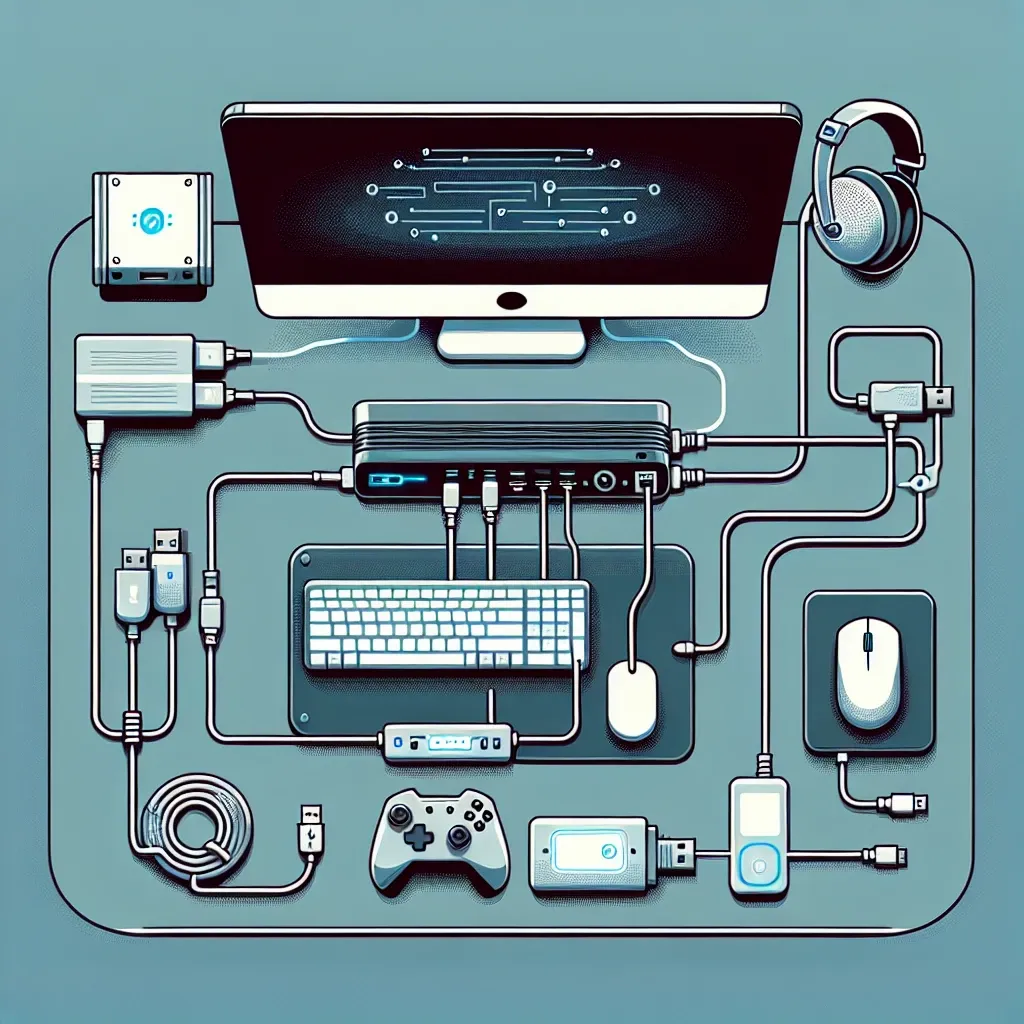In today’s technology-driven world, connectivity is key. Many individuals rely on multiple devices to perform various tasks. One common question arises: Can I use a USB splitter to connect both wired and wireless devices? A USB splitter can be a handy tool, allowing multiple connections through a single USB port, but whether it can bridge both wired and wireless devices has its intricacies. This article explores the functionality of USB splitters, the nature of wired and wireless devices, and the potential advantages and limitations thereof.
| USB Splitters Overview | Wired Devices | Wireless Devices |
|---|---|---|
| Definition | Physical devices that connect directly to a USB port. | Devices that require a direct physical connection to transfer data. |
| Functionality | Allows multiple wired devices to connect through one USB port. | Allows devices to communicate data without physical connections. |
| Use Cases | Keyboards, mice, printers, external hard drives. | Wireless mice, keyboards, Bluetooth speakers, and Wi-Fi adapters. |
Understanding USB Splitters
A USB splitter, also known as a USB hub, allows you to connect multiple USB devices to a single USB port. Typically found in two forms—powered and unpowered—USB splitters can expand the number of devices connected to a computer or other host devices.
Types of USB Splitters
- Unpowered USB Splitters: These rely on the power provided by the host device. They are suitable for low-power devices and can often connect up to four devices.
- Powered USB Splitters: Equipped with their own power source, these splitters can support multiple high-powered devices, like external hard drives or printers.
Wired vs. Wireless Devices
Understanding the distinction between wired and wireless devices is essential in determining the capabilities of a USB splitter.
What Are Wired Devices?
Wired devices, as the name suggests, connect physically to a computer or other systems using cables. Common examples include:
- Keyboards
- Mice
- Printers
- External Storage Devices
What Are Wireless Devices?
Wireless devices connect to systems using technology such as Bluetooth or Wi-Fi, eliminating the need for physical cables. Common types include:
- Wireless Keyboards
- Wireless Mice
- Bluetooth Speakers
- Wi-Fi Adapters
Connecting Wired and Wireless Devices Using a USB Splitter
While USB splitters serve to connect multiple devices via USB ports, the methodology of connecting wired and wireless devices is inherently different. Here’s a breakdown of how each device type interacts with your computer:
How USB Splitters Work with Wired Devices
For wired devices, the USB splitter connects directly to the host system, allowing multiple wired peripherals to communicate through that single port. For instance, plugging in a wired keyboard and a printer into the USB splitter will allow both to function without a hitch.
How USB Splitters Work with Wireless Devices
Wireless devices typically rely on Bluetooth or Wi-Fi connections, meaning they do not connect directly through a USB port. Instead, wireless devices may use:
- A USB dongle (for Bluetooth or Wi-Fi) that connects through the USB splitter to operate.
- Software on the host computer that drives the wireless connection without needing a USB port.
Limitations of Using a USB Splitter for Wireless Devices
Despite their functionality, there are limitations regarding the use of USB splitters with wireless devices:
1. Dependency on Dongles
Many wireless devices require a USB dongle to communicate with a computer, which can lead to cluttered connections when used with a USB splitter.
2. Lack of Direct Connections
Wireless devices operate through signals rather than direct connections. A USB splitter does not influence or improve connectivity between a computer and a wireless device.
3. Bandwidth Limitations
Using multiple devices through a splitter may lead to bandwidth restrictions, especially if the devices demand significant power or data usage.
Best Practices for Using USB Splitters
1. Choose the Right Splitter
When selecting a USB splitter, consider whether you need an unpowered or powered device based on the type of peripherals you’ll connect.
2. Prioritize Wired Devices
If you intend to connect both wired and wireless devices, prioritize the use of wired devices directly, utilizing the USB splitter for additional connectivity.
3. Organize Dongles
For wireless devices that require USB dongles, use cable management solutions to keep connections neat and accessible.
Alternatives to USB Splitters
If your goal is to connect both wired and wireless devices more efficiently, consider the following alternatives:
1. USB Hubs
USB hubs, especially powered ones, can provide additional ports and necessary power for multiple devices and often come with features like data transfer speed optimization.
2. Bluetooth Adapters
A dedicated Bluetooth adapter can help manage all your wireless devices without confining them to a USB splitter’s limitations.
3. Multi-Device Peripherals
Consider investing in peripherals that support multiple connection types, like devices that can connect via USB and Bluetooth.
Conclusion
In conclusion, while a USB splitter can effectively manage connections between multiple wired devices, connecting wireless devices through a USB splitter is less straightforward. The need for dongles and limitations of wireless technology pose challenges. To enhance your setup, consider alternatives that ensure efficient and effective use of both wired and wireless devices. A well-planned connectivity setup can streamline workflows and enhance productivity.

